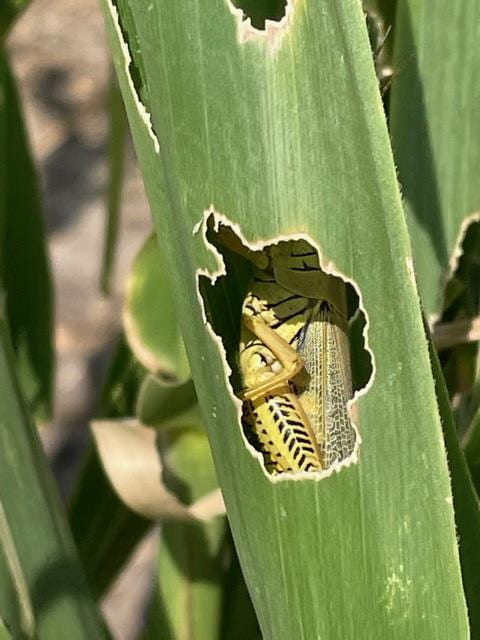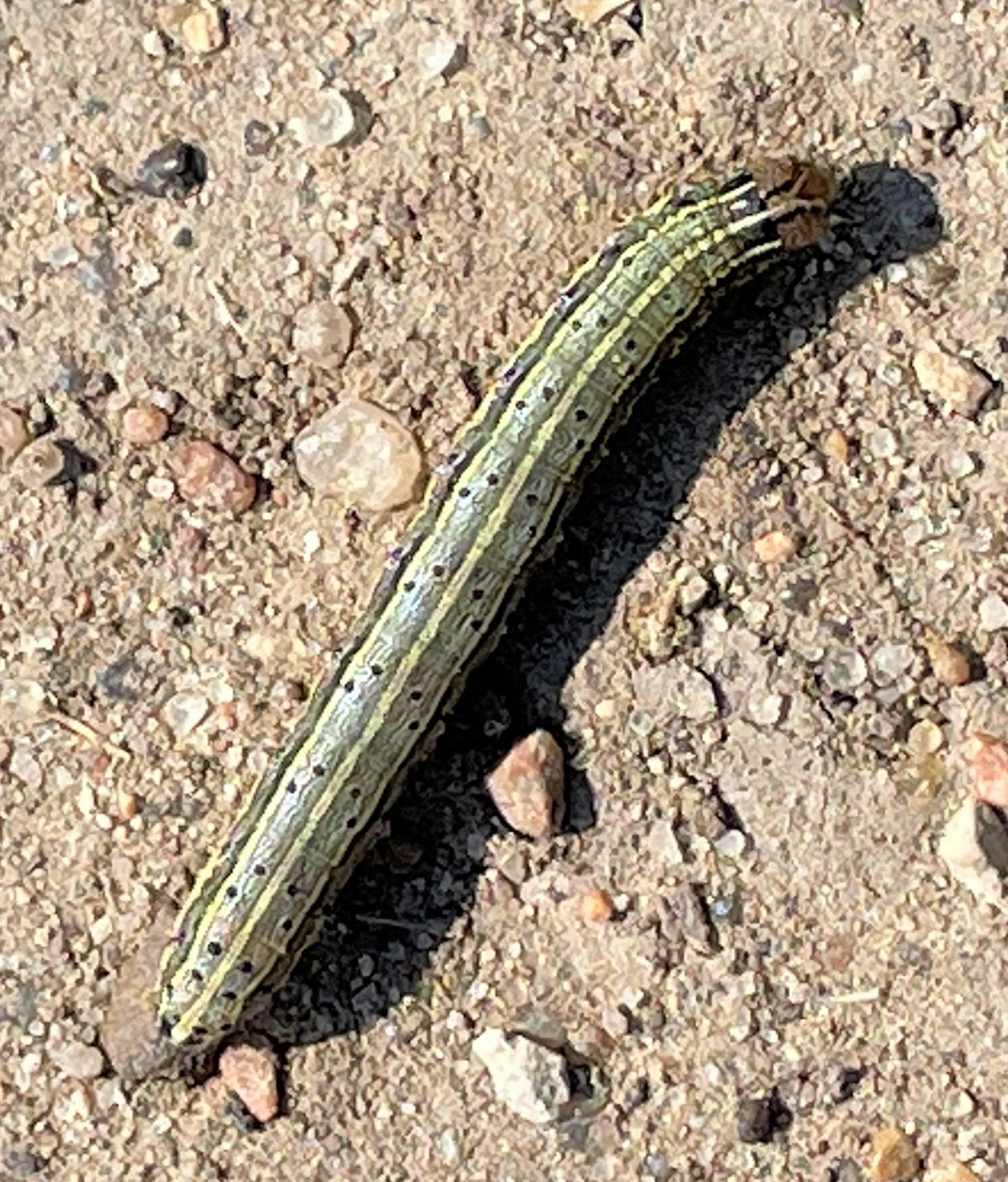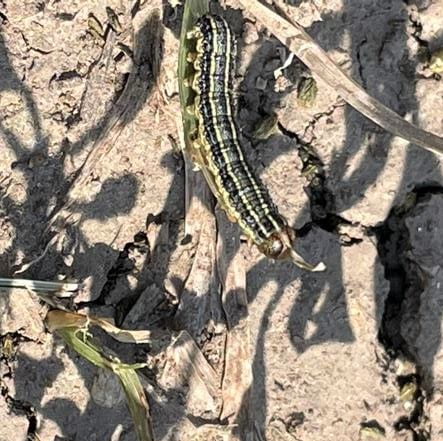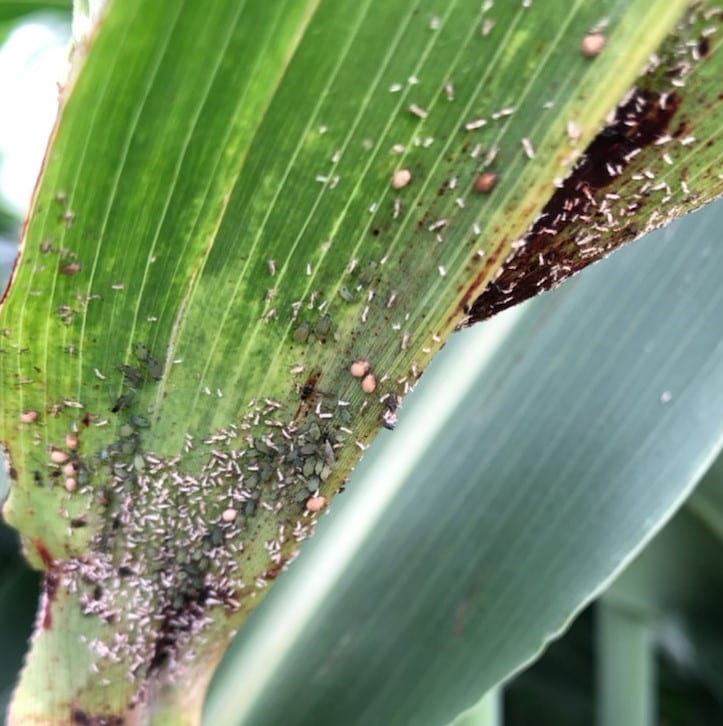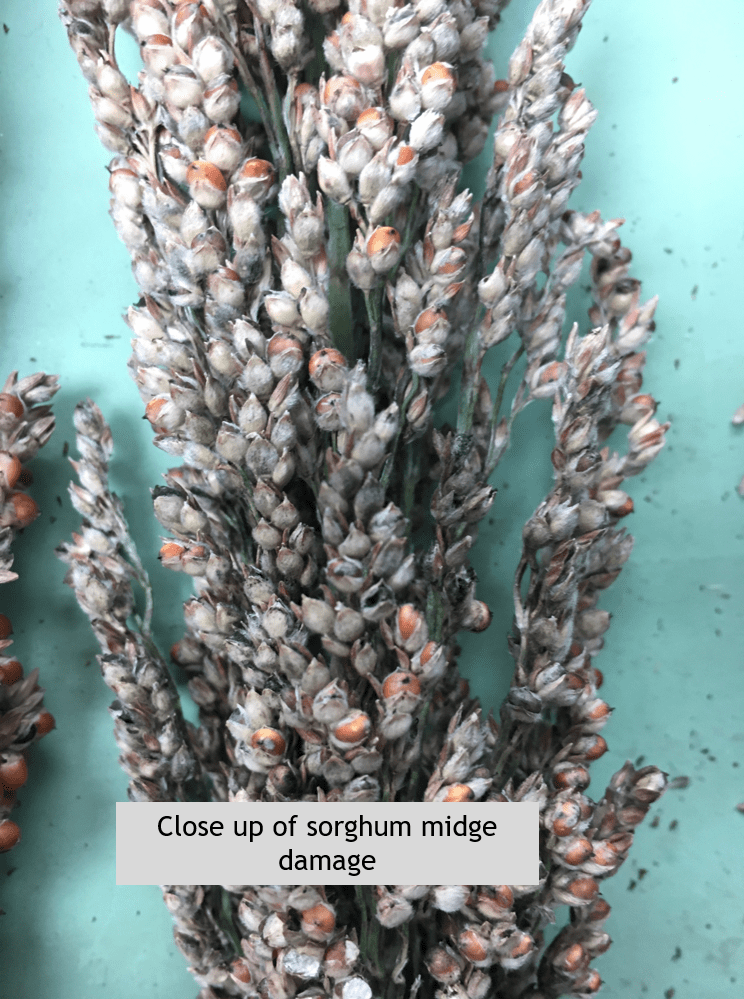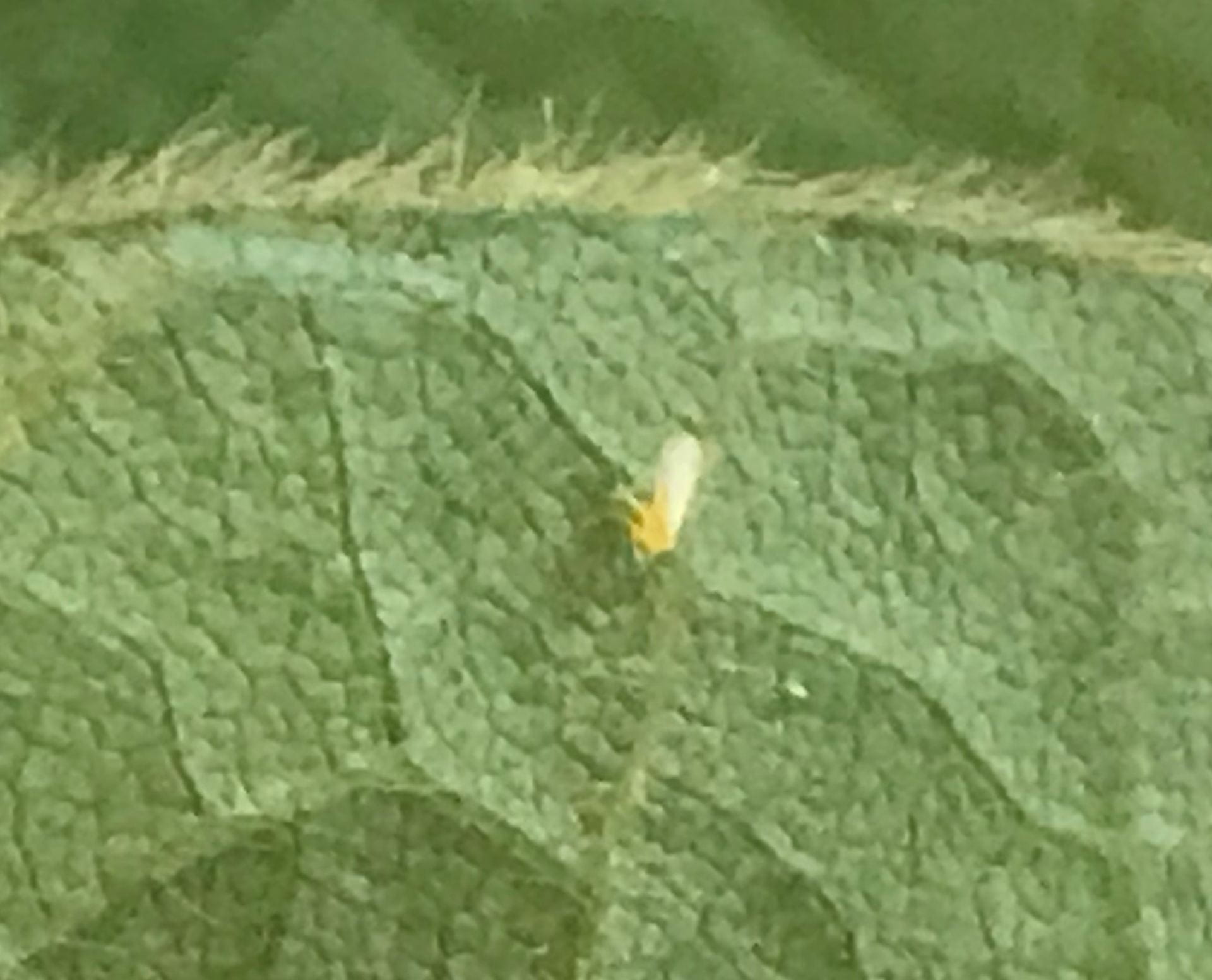–by Anthony Zukoff — Southwest Research and Extension Center
Weather patterns can have a significant impact on grasshopper populations year to year. Hot, dry summers increase survival of nymphs and adult grasshoppers, leading to increased egg production during the growing season. Cool, wet weather promotes fungal pathogens that can reduce egg and nymph survival, but if the following spring is warm and wet, egg hatching will increase and more nymphs survive. So, several years of hot, dry summers followed by warm, wet springs can eventually lead to large populations of grasshoppers in some regions.
As the weather in western Kansas continues to be hot and dry this summer and areas of drought increase, larger populations of grasshoppers going into the fall season could be possible. This year’s USDA Rangeland Grasshopper Hazard map (Figure 1) may explain the recently observed buildup of grasshoppers along field edges and in grassy areas. As non-crop sources of food are exhausted, grasshoppers will shift their grazing over to anything still growing in the landscape. In areas with greater grasshopper pressure seedling alfalfa and wheat could be at risk.
Before planting alfalfa, treatment should be considered if there are 15 or more grasshoppers per square yard around the planting area. Once planted and growing, consider treatment if 3-5 grasshoppers per square yard are found in the seedling alfalfa stand.
Vegetated borders around areas where wheat will be planted should be scouted 10 days before planting. Consider treating those borders if there are 7 to 12 grasshoppers per square yard. Once growing, 3 or more grasshoppers per square yard within the field can destroy seedling wheat stands. If grasshopper populations are low to moderate, seed treatments can protect emerging wheat plants for several weeks if products are applied at the highest registered rate. Seed treatments will be less effective under severe grasshopper pressure. Avoid planting too early as this will help reduce the time that wheat will need to be protected.
In either crop, depending on the products used and severity of the season’s grasshopper buildup, multiple applications might be necessary. Please refer to the most recent Alfalfa and Wheat Insect Management Guides for specific control information.
Alfalfa Insect Management Guide: http://www.bookstore.ksre.ksu.edu/pubs/MF809.PDF
Wheat Insect Management Guide: http://www.bookstore.ksre.ksu.edu/pubs/mf745.pdf

Figure 1. Areas shaded in orange and red could experience increased grasshopper pressure through this fall.
